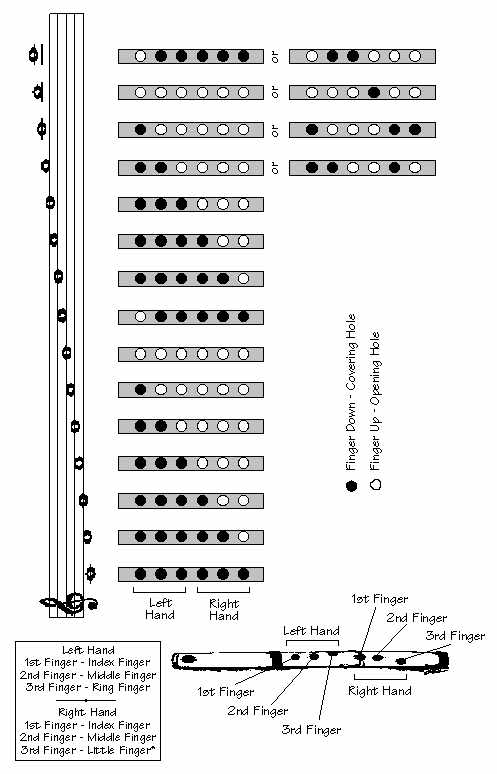Fingering Charts for Bamboo Flutes

Side blown bamboo flutes are made in many different keys. One fingering chart is needed for each key, totaling 12 charts. To simplify things, I use only one chart in the the key of C major - the most common key, and it also has no sharps or flats.
There are 7 notes in the first octave. Think of the first or lowest note on your flute as a C or a do as in do, re, mi. These 7 notes move in succession and form the diatonic scale, or a major scale. We can call each note a number, such as 1, 2, 3, 4, 5, 6, and 7. One would be the lowest note of the flute. If your flute is in the key of C, then it will be a C. If your flute is in the key of G, then it will be a G. It may be easier to think of the notes as do, re, mi, where the lowest note will be a do. It's always a do, it doesn't matter what key your flute is in.
There are more fingerings for the major scale than are shown on the opposite page. There are also the sharps and flats which make up the chromatic scale. With half hole technique and a good embouchure, all the notes can be played on the flute. Further more, you can play quarter tones - notes that are in between the piano keys - on the flute.
Here are some of the fingerings for the 6th (la) and the 7th (si) notes:
6th (la) XOO/OOX XOO/OXX XOO/XXX
7th (si) OOO/OOX OOO/XOO OOO/XXO OOO/OXO OOO/OOX
Every flute is unique because of the natural bore of the bamboo. One fingering may work fine for one flute and not the other, especially in the higher notes. Experiment with different fingerings and write down on a piece of paper the fingering and a little description of the characteristics and pitch of the tone so that you will remember them when you want to use them.
*On small flute, the ring finger of the right hand is used instead of the little finger to cover the 3rd finger hole.

For more information please e-mail david at sideblown dot com